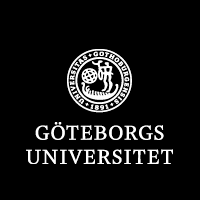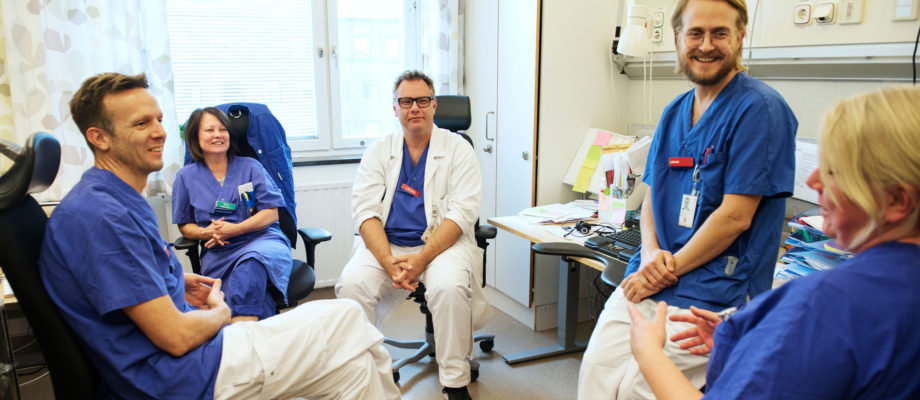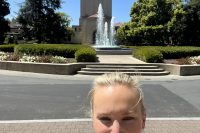RESEARCH. This year’s Nobel Laureates in Medicine have revolutionized the treatment of cancer with immunotherapy, which means that one out of five patients with metastatic skin cancer can be cured. But half of the patients with metastatic malignant melanoma are not helped by the new treatment. Researchers at the Sahlgrenska Cancer Center and on the Melanoma Team at Sahlgrenska University Hospital are working together in an attempt to understand why immunotherapy has such varied effects for different patients.

The success from immunotherapies developed by this year’s Nobel Laureates in Medicine, James P. Allison and Tasuku Honjo are very encouraging. The researchers worked with separate proteins, called CTLA-4 and PD-1. These proteins are located on the surface of the immune cells known as T cells, where they inhibit the ability of immune cells to recognize and attack cancer cells. Using antibodies, both Nobel Laureates succeeded in curbing these inhibitory proteins, accelerating the ability of the immune cells to kill cancer cells. Immunotherapy, also known as checkpoint therapy, was born.
“When we saw the clinical results of immunotherapy, we realized that we had to further develop the animal models we use in our research,” says Jonas Nilsson, professor, researcher and director of Sahlgrenska Cancer Center.

An aggressive skin cancer
Jonas Nilsson is also the group leader at Sahlgrenska Translational Melanoma Group, SATMEG, which brings together researchers and medical doctors researcher melanoma at Sahlgrenska University Hospital and Sahlgrenska Cancer Center. Metastatic malignant melanoma is an aggressive skin cancer, which historically has had a high mortality rate. Previously 70 percent of patients died within a year of diagnosis. But when immunotherapy with checkpoint antibodies was introduced, it revolutionized treatment.
At Sahlgrenska Cancer Center, Lisa Nilsson, who runs the research team’s lab, is assembling a reaction plate.
“We are trying to develop new treatments for metastatic melanoma and pancreatic cancer. The best way to cure cancer is by activating the immune system, but the immune cells need help,” she says.

Identifying differences
“To find out what types of help the immune system of a given patient should receive, we are developing personalized animal models and are starting clinical trials with patients. With these animal models, we are in the forefront internationally,” says Jonas Nilsson:
“We are building up a living biobank where melanoma patients can be linked with a mouse that becomes a kind of avatar for the patient’s cancer. The mouse has the same combination of immune system and cancer that the patient has. This is especially important for patients who do not respond to immunotherapies.”

Researches around the world are trying to find answers to why immunotherapy is so effective for some people with metastatic malignant skin cancer but has no effect on half the patients? What is it that distinguishes these groups from an immunological perspective?
“It is these differences we are trying to identify,” says Max Levin, who is an oncologist and principal investigator in the Wallenberg Laboratory at Sahlgrenska.
All are offered treatment

Along with his colleague, Sara Bjursten, Levin is studying exactly how side effects and results of immunotherapy are connected. Because the immune system is activated by the treatment, the patient can experience severe autoimmune reactions. This suggests that there are common mechanisms behind autoimmune reactions and the tumor-inhibiting effect.
“Our goal is to identify these mechanisms by focusing on the patient’s T cells in the immune system,” Sara Bjursten says. “We collect blood, skin and tumor biopsies, excrement and urine samples from the patients. In cellular and animal experiments, we then study how autoimmune reactions are connected with treatment responses.”
Today essentially all patients are offered immunotherapy, despite the fact that half do not respond to the treatment. There is a lack of biomarkers that can determine whether or not the treatment will produce results.
“We also perform an advanced mapping of the patient’s gastrointestinal microbial flora (‘the gut microbiota’), which plays an important role in the immune system. Previous studies show that there is a connection between the gut microbiota and responses to immunotherapy,” says Max Levin.
The project requires many different areas of expertise, which is why Levin and Bjursten collaborate with researchers at the Sahlgrenska Department of Rheumatology, Sahlgrenska Cancer Center, Chalmers University of Technology, MetaboGen biotech company and Wallenberg Laboratory.
Intractable liver metastases of ocular melanoma

At the Department of Oncology at Sahlgrenska, Chief Physician and Associate Professor Lars Ny and Henrik Jespersen, resident in oncology and PhD student, demonstrate what happens when patients receive immunotherapy. With his background as a clinical pharmacologist and director of the clinical trials unit, Lars Ny has extensive experience with clinical trials. He is section head of the melanoma team and is responsible for the clinical part of research at SATMEG. Ny is working on ocular melanoma, an intractable disease in which the cancer first occurs inside the eye and then spreads, often to the liver. In the project he works together with Jonas Nilsson to characterize eye melanoma, because these patients currently are not helped by immunotherapy with only checkpoint inhibitors. The researchers are also testing combining PD-1 inhibitors with HDAC inhibitors in a clinical trial to see if immunotherapy can also produce better results for ocular melanoma.
“We hope that HDAC inhibitors will reprogram the hidden cancer cells, making them visible to the immune cells so that the immunotherapy works,” says Lars Ny.
So far 29 patients are testing this form of treatment. The first phase is completed, and a report is currently being finalized for publication.
Can eliminate cancer
What do melanoma researchers think about immunotherapies up until now? They seem to agree that immunotherapies have meant more for melanoma patients than any previous treatment.
“We do not have to start from scratch. With some patients, we can eliminate the cancer, and for others we can at least prolong life. I regard immunotherapies as a starting point for further treatment,” says Jonas Nilsson.
“Because the results are so good, we will continue to develop immunotherapies until we find a cure,” says Lars Ny.
“I believe that immunotherapy will also work in cancers where you do not see any results today,” says Max Levin.

The traditional treatment alternatives (radiation, anti-cancer drugs, surgery and targeted treatments) are also available but are being used less often.
Even if metastatic cancer is still a disease that is fatal for many patients, the work still seems meaningful, they say.
“Our commitment and knowledge make a difference for patients and relatives. We are working to ensure that they receive the best possible treatment and care,” Ny says.
“The driving force is to advance the state of knowledge and to provide patients in the Västra Götaland region with the most modern treatment possible,” Jonas Nilsson concludes.
Fakta
- About 4,000 people contract malignant melanoma in Sweden each year. Of those, between 500 and 600 have a metastatic form of the disease.
- Sahlgrenska Cancer Center is a Center of Expertise and Research at Medicinareberget. SATMEG, Sahlgrenska Translational Melanoma Group, is a collaboration among Jonas and Lisa Nilsson’s laboratory, surgeon Roger Olofsson Bagge and oncologists Lars Ny and Ulrika Stierner. The melanoma team at the Jubilieum Clinic, Sahlgrenska University Hospital Department of Oncology, consists of Lars Ny, Ulrika Stierner, Sara Bjursten, Henrik Jespersen and Max Levin. Max Levin heads his own research team in the Wallenberg Laboratory and is not a member of SATMEG, though he collaborates with it.
- For more info: www.satmeg.se
TEXT AND PHOTO: ANNA REHNBERG











